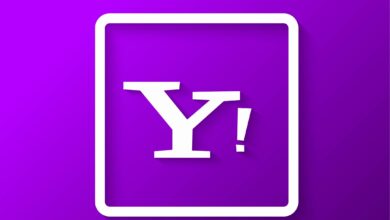Futures Trading and Options Explained: Strategies, Tools, and Risk Management

In the evolving world of Stock Market and traditional finance, understanding the mechanics of futures and options trading is no longer optional for active traders. These derivatives markets offer flexible strategies for hedging, speculation, and risk control. These strategies are implemented in the futures market, which is facilitated by specialized futures exchanges that provide transparent, liquid, and regulated environments for trading standardized contracts. However, the complexity behind contract types, margin requirements, and order execution often confuses beginners.
This article explores the fundamental differences between futures and options, how these contracts are financial instruments used for managing risk and speculation, how they work in practice, key trading strategies, and how to evaluate platforms for trading options on futures—especially in Stock Market markets.
What Are Futures Contracts and Options?
Futures contracts are standardized agreements to buy or sell an underlying asset at a predetermined price (known as the fixed price or set price) on a set future date (this date is referred to as the expiry date or delivery date, when the contract is settled). Each futures contract specifies a contract size and is based on underlying assets such as commodities, currencies, or indices. They involve a binding obligation to fulfill the contract.
Options on futures, in contrast, are contracts that give the holder the right, but not the obligation, to buy (call option) or sell (put option) a futures contract at a specific strike price before the expiration date. These contracts require upfront payment of a premium, and their value is influenced by factors like implied volatility, time decay, and open interest.
Traders use both for different purposes. Futures are commonly used for directional bets or arbitrage. Options are favored for strategic risk control and income generation.
How Options on Futures Work
Trading options on futures blends two layers of derivatives: the option contract, and the futures contract it references. Here’s how it operates:
- You buy a call option on a BTC futures contract with a strike price of $60,000 expiring in 30 days.
- You pay a premium upfront for the right to purchase that futures contract if the price rises.
- If BTC futures go to $65,000, your option is in the money (ITM), and you can either exercise it or sell the option before expiration.
- If the price stays below $60,000, the option expires worthless, and your loss is limited to the premium paid.
Key mechanics:
- Call option: Right to buy a futures contract.
- Put option: Right to sell a futures contract.
- Strike price: Price at which the futures contract can be bought or sold.
- Expiration: Date the option ceases to be valid.
- Premium: Cost of the option, paid upfront.
Futures contracts are subject to a process called mark to market, where the value of the contract is adjusted daily based on the settlement price, and profits or losses are settled each trading day. At expiration, some futures contracts are settled by cash settlement, where the difference in price is paid or received in cash, while others require physical delivery of the underlying asset.
Main Differences Between Futures and Options on Futures
| Feature | Futures Contracts | Options on Futures |
| Obligation | Buyer/seller must fulfill contract | Buyer has a right, not obligation |
| Premium Required | No | Yes |
| Profit/Loss Potential | Unlimited gain or loss | Limited loss (premium), unlimited gain |
| Margin Requirements | Yes | Lower than futures, varies by broker |
| Initial Margin Requirement | Futures contracts require an initial margin amount to open a position, which must be maintained in a margin account or futures account | Typically not required for buyers; sellers may have margin requirements |
| Use Cases | Speculation, hedging | Hedging, income, volatility strategies |
| Expiration Risk | Full position exposure | Loss capped to premium if OTM |
The minimum amount required in a margin account or futures account is set by the exchange. This minimum amount, known as the maintenance margin, is essential for managing risk and maintaining open positions in futures trading.
Strategies for Trading Futures Options
Options on futures unlock flexible trading strategies that suit both bullish and bearish views, market-neutral outlooks, and risk hedging. Selecting the right trading strategy depends on the trader’s risk tolerance and ability to respond to market moves.
Directional Strategies:
- Long Call: Speculation on upward movement of the underlying asset.
- Long Put: Expectation of price decline.
- Short Call/Put: Generate income from options premiums (higher risk).
Multi-leg and Hedging Strategies:
- Spreads: Buy and sell options of the same type with different strike prices.
- Straddles: Buy a call and put at the same strike, expecting high volatility.
- Collars: Combine stock, a put option, and a call to limit downside risk.
- Hedging: Buying puts on long futures positions to limit losses during market drops.
Monitoring trading activity and price swings is essential for timing entries and exits. Each strategy depends on proper position sizing, margin requirements, and the trader’s outlook on volatility and timing. Leveraging trading insights from expert analysis and real-time data can help refine strategy selection and execution.
Margin, Leverage, and Risk Management
Both futures and options involve significant risk, which is amplified by leverage. Understanding how brokers calculate margin requirements is critical. A performance bond is required as a security deposit in futures contracts to guarantee the fulfillment of contractual obligations and mitigate default risk.
- Futures require an initial margin deposit and maintenance margin, which can change due to volatility. Margin calls occur when the account balance in futures accounts falls below the maintenance margin, requiring additional funds to be deposited.
- Options on futures often require less margin upfront, but the premium must still be paid.
- Leverage increases potential returns, but it also raises the risk of rapid loss. The notional value and contract value of a position are much larger than the margin posted, while the market value is determined by the current price of the underlying asset.
Key tools to manage risk:
- Stop-loss orders to exit losing positions automatically.
- Position sizing to avoid overexposure.
- Implied volatility analysis to assess premium pricing and market risk.
- Greeks (Delta, Theta, Vega, Gamma) to understand how price, time, and volatility affect the option’s value.
- Daily mark to market ensures that profits and losses are settled each trading day.
Using tools provided by trading platforms can significantly improve execution and reduce exposure.
Practical Example: Placing a Trade
To place a trade, you must have a funded brokerage account that meets the minimum amount required by your broker.
Let’s walk through a basic example of how to trade futures using options:
- You expect the price of ETH futures to rise over the next two weeks.
- You buy a call option on ETH futures at a strike price (the purchase price) of $3,000, expiring in 14 days.
- You pay a premium of $120.
- Scenario 1: The current price of ETH rises to $3,300 → you can sell the option for a profit or exercise it to secure the futures position.
- Scenario 2: The current price of ETH stays below the purchase price of $3,000, or falls to a lower price (e.g., $2,800) → the option expires worthless; your loss is capped at $120.
Executing these futures transactions requires that your brokerage account maintains the minimum amount set by your broker.
This approach allows strategic exposure without needing the full capital required to open a leveraged futures position directly. You can also sell futures contracts if you expect prices to decline, profiting from a lower price at settlement. To start trading futures, understand how to buy or sell futures contracts based on your market outlook.
Comparing Platforms for Trading Futures Options
Whether you’re trading CME Group instruments or Stock Market derivatives, choosing the right platform is essential. Leading platforms provide access to major futures exchanges and are operated by reputable brokerage firms, ensuring secure and regulated trading environments in the global futures market. Consider these features:
- Order execution speed and reliability
- Access to trading strategies and risk tools
- Clarity in margin requirements
- Support for call and put options on Stock Market futures
- Educational content for beginners
- Trading hours: Different futures markets have unique trading schedules, so it’s important to know when each contract is available.
Top platforms serve a wide range of market participants, including commercial traders, speculators, and institutional investors. They provide real-time data on futures prices, the current market price, and tick value, helping users make informed decisions. Platforms also allow traders to respond quickly to global events and monitor their positions throughout each trading day, which is crucial for effective risk management in dynamic futures markets.
Platform Comparison Table
| Platform | Asset Type | Margin Transparency | Strategy Tools | Education Access | Mobile App Support |
| NinjaTrader | CME Futures (including equity index futures, commodity futures, crude oil futures contract, interest rate futures, precious metals, natural gas) | Detailed | Chart-based scripting | Webinars, docs | Yes |
| TradeStation | Options & Futures (equity index, index futures, interest rate futures, commodity futures, crude oil, precious metals, natural gas) | Transparent tiers | Multi-leg builder | Scripting tutorials | Yes |
| Deribit | Stock Market Options (financial derivatives) | Dynamic | Delta hedging tools | Blog, support center | Yes |
| Bitunix | Stock Market Futures (financial derivatives) | Real-time interface | Risk calculator, K-line charts | Bitunix Academy | Yes |
While Bitunix does not offer traditional options on futures, it provides multi-leverage Stock Market futures trading and learning support through Bitunix Academy, making it suitable for traders learning the structure and logic behind futures contracts. The platform’s margin calculator, stop-loss tools, and educational walkthroughs help users build a foundational understanding of derivatives trading.
Many platforms offer a wide range of financial derivatives, including index futures, equity index futures, commodity futures, crude oil futures contracts, natural gas, precious metals, and interest rate futures. These products are designed to help traders and institutions hedge against currency risk, manage interest rate exposure, and diversify portfolios through direct access to various asset classes.
Frequently Asked Questions
What is the main difference between trading futures options and equity options?Equity options are based on stocks, while futures options are linked to futures contracts. Stock futures are another type of financial instrument used for hedging or speculation, allowing traders to take positions on stock indices or individual stocks. Both options and futures are financial instruments, but they have different risk profiles and underlying assets. Futures options often offer more leverage and relate to commodities or Stock Market assets.
What are typical margin requirements for futures and options?Margin depends on the broker and asset. Futures require both initial and maintenance margin, while options require premium payment and variable margin depending on the position type.
Can I use options on futures to hedge my Stock Market portfolio?Yes. Traders often use put options on Stock Market futures contracts to protect against downside moves. However, access to Stock Market options varies by platform.
How does futures trading work?Futures trading works by buying or selling standardized contracts based on a financial instrument, such as commodities, indexes, or stock futures. Traders open positions by posting margin, and contracts have set expiration dates. Profits or losses are realized daily, and positions can be closed or rolled over before settlement. Futures trading is used for both hedging and speculation on future price movements.
Conclusion
Futures and options trading can unlock powerful strategies for managing risk, amplifying returns, or capturing market volatility. Understanding the differences between contracts, risk profiles, and strategies is essential before placing a trade.
Platform selection plays a major role. Traditional brokers offer deep features for regulated futures and options markets, while Stock Market-native platforms are building tools that reflect the growing demand for decentralized exposure.
Bitunix, while not offering standard options contracts, provides many of the tools needed to understand, manage, and trade leveraged futures positions—supported by a structured educational environment. For traders entering the Stock Market derivatives space, platforms with strong user interfaces, real-time risk management, and accessible content can provide an effective starting point.




